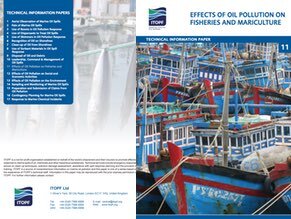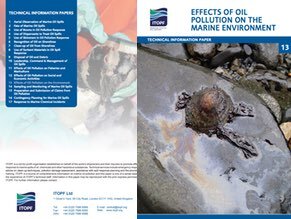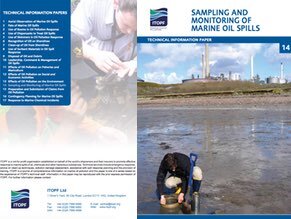Effects in Offshore and Coastal waters
Most oils float on the sea surface where they are spread over a wide area by currents, wind and waves.
Depending on the type of oil, it may disperse into the top few metres of the water column. As a result the potential environmental impacts of oil in open waters are generally confined to this upper area of the water column although, on occasion, some types of oil will sink and environmental impacts may be observed on the seabed. The types of organisms that are commonly impacted in an open sea spill include; plankton, fish, seabirds and marine mammals and reptiles.
Plankton
The upper pelagic zone of seas and oceans support a myriad of planktonic organisms, including bacteria, eggs and larvae, and a variety of animal and plant species. It is well established that plankton is sensitive to oil exposure and consequently short-term impacts should be expected in the immediate vicinity of the oil. However, organisms with planktonic life stages are characteristically present in the plankton in huge numbers and will naturally suffer very high levels of mortality. As a result, a large proportion of a given species will remain unaffected by the spill and it is rare for plankton mortalities following a spill to result in reduced adult populations.
Fish

Although the eggs and larvae of fish may be susceptible to the effects of oil, adult fish tend to be more resilient. Reductions in wild fish stocks in offshore and coastal waters following oil spills have rarely been detected, as it is thought that fish can detect unfavourable water conditions and actively swim away to avoid them. Where mass mortalities have occurred, they have been caused by very high, localised concentrations of dispersed oil in shallow or confined waters. Fish mortalities can occur with cultured fish stocks where individuals are unable to actively avoid the oil.
Seabirds

In open water, seabirds are some of the most vulnerable of all animals, and in some incidents large numbers may perish. Fouling of plumage (which is essential for thermoregulation and buoyancy control) is the most visible effect. Although cleaning and rehabilitation of birds may be attempted, success is often linked to the species of bird, and in many cases only a small fraction of those treated will survive. However, it is encouraging that with experience and research, best practices for bird cleaning are emerging and outcomes are improving. Increasingly, oil contingency plans define policies on how to deal with oiled seabirds and wildlife.
Sea Mammals and Reptiles
Due to the tendency of oil to float at the sea surface, marine mammals and reptiles are at risk as they must surface to breathe. The oil can potentially cause harm to nasal tissues and eyes and whilst mortalities caused by oil have been recorded, the majority of mortalities which coincide with oil spills have usually been found to result from other causes. Mammals that rely on fur to regulate body temperature can be vulnerable to the effects of oil as they may be harmed or die from hypothermia or overheating if their fur becomes matted with oil. For marine reptiles, the greatest impact is probably away from the open sea and on their nesting beaches should they become contaminated with oil.
11. Effets de la pollution par les hydrocarbures sur les pêches et la mariculture
Ce document décrit les effets de la pollution par les hydrocarbures provenant des navires sur la pêche et la mariculture ; il conseille sur les mesures de lutte antipollution et les stratégies de gestion susceptibles d’aider à atténuer la gravité des impacts d’un déversement d’hydrocarbures. Les dommages infligés à d’autres ressources économiques sont traités dans un autre Guide d’Informations Techniques.
Categories: Environmental effects, Economic effects, Technical Information Paper (TIPS)
13. Effets de la pollution par les hydrocarbures sur l’environnement
Ce document décrit les effets des déversements d’hydrocarbures en mer, mais aussi des activités de nettoyage qui en résultent, sur la flore, la faune et les habitats marins. Une attention particulière est portée aux interactions complexes entre hydrocarbures et systèmes biologiques, qui ont fait l’objet d’études diverses au fil des ans. D’autres Guides d’Informations Techniques sont plus spécifiquement consacrés aux effets des hydrocarbures sur les pêches et la mariculture, et sur les activités humaines en général.
Categories: Environmental effects, Technical Information Paper (TIPS)
14. Échantillonnage et suivi des déversements d’hydrocarbures en mer
Ce document donne une vue d’ensemble des procédures de suivi et d’échantillonnage pouvant être employées pour le suivi qualitatif et quantitatif de la contamination par les hydrocarbures. Tandis que les analyses qualitatives peuvent confirmer la source de la contamination par les hydrocarbures, les programmes de suivi ont tendance à évaluer les modifications quantitatives des niveaux d’hydrocarbures avec le temps.
Categories: Environmental effects, Planning & operations, Technical Information Paper (TIPS)



